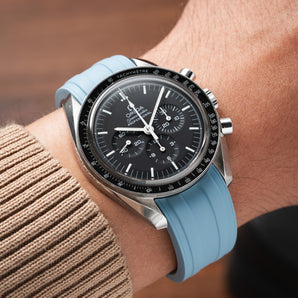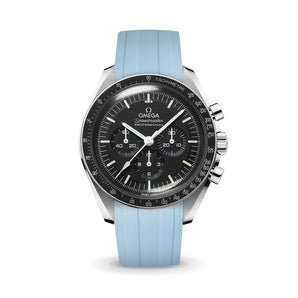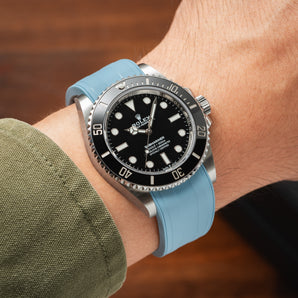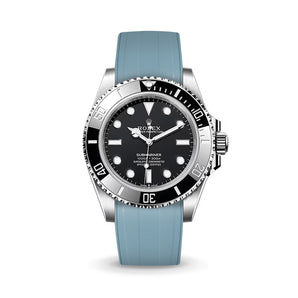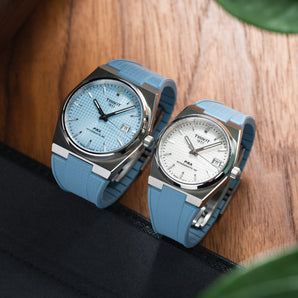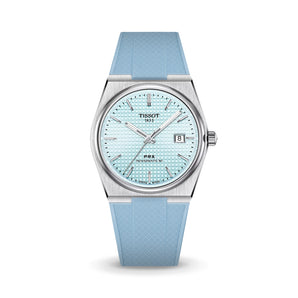Founded by Thomas Fleming and led by former attorney-turned-watch photographer James Kong, Fleming embodies a new generation of independent watchmakers who bring a collaborative mindset to modern watchmaking. Rather than claiming in-house supremacy, they openly embrace working with external suppliers while maintaining rigorous design control.
James' journey from lawyer to industry insider reads like a modern American success story. In just two years, he transformed from a photography hobbyist to shooting for Hodinkee and major brands, before joining Fleming as COO and Art Director. His transition mirrors broader changes in the watch industry, where passion and vision increasingly matter as much as traditional credentials.

Introduction & Journey To Watches
Ken: For those who don't know, James is the man behind Fleming and @waitlisted (James' photography IG account). You've probably seen his photos on Instagram. Your journey is remarkable. When we first started talking, was that pre-COVID?
James: Early COVID. I was getting into photography, and you were growing your brand in the early stages. It's been cool to follow your journey.
Ken: I remember thinking his photos are great, then we chatted and I thought, "This guy KNOWS what he's talking about." Then suddenly he's shooting for Hodinkee and the Tiffany Patek (Philippe Nautilus 5711) novelty. That's quite a journey.
James: Looking back, so much happened from 2020 (when I bought my first camera) to 2022, when I left an 11-year legal career for watches full-time.
Learning photography, shooting for brands, and travelling to Switzerland — all within two years. I still struggle to process it. I never could have planned it, but I'm grateful it happened.
Ken: You've probably experienced more in the past two to three years than in your 11 years as a lawyer.
James: For sure. When I was considering leaving law for watches, I felt more proud of what I'd done in two years in the watch world than anything in 11 years as a lawyer. I hope my old boss doesn't watch this. But that was a driving force — realising this is where my heart is, where I actually have something to contribute. Luckily, I haven't regretted that decision.
Ken: When you're working in your passion, it's different. You wake up energised. It doesn't feel like work.
James: Exactly. I remember realising you also had a day job, which I didn't know because Delugs had grown so big. I thought, "There's no way this isn't Ken's entire life." Then I found out you still had a day job.
Ken: I left about two years ago. By then, we had an office and team members, so I was living this dual lifestyle. Neither side knew the other existed. It's good to be here where we're both in the industry now, versus when we first chatted and were just starting out.
James: It's been quite a ride!

Fleming Brand Overview & Origins
Ken: Let's talk about Fleming. You're the COO and Art Director of this relatively new brand. How would you describe Fleming to our audience?
James: We're a young brand that launched last year. Our core team is Thomas, who founded the brand and started working on it in 2020, and me — I joined at the end of 2022. We launched officially in 2024, so a little over a year ago. We only have one model in three variations.
The genesis was Thomas having an early COVID realisation that his other pursuits weren't where his heart was. Over the past 20 years, you have had people like Max Büsser or Ming (Thein) come along, who weren't the Swiss ideal of a watchmaker but were outsiders who successfully started watch brands. That gave Thomas and me confidence that, as two Americans far removed from the watchmaking industry, but passionate about watches, there was an avenue for us to take our vision and actually make it happen.
Ken: You weren't at Fleming when the watches were designed.
James: Right. Thomas started from a blank page in 2020, spent six months teaching himself CAD, designed the watch and then started cold emailing people in Switzerland. If you're an American emailing suppliers in English in Switzerland, you won't get many replies. Luckily, we found fantastic people to work with. When I joined, the core of the first series was done. My contribution will be the (Series 1) Mark II and future models.
Design Philosophy & Collector Background
Ken: Both you and Thomas are collectors and enthusiasts. You're a photographer. How has that shaped Fleming's design language?
James: Being a collector and photographer has been helpful because even before I dreamed of working in watches, I spent so much time thinking about my watches — what I liked and what I didn't.
When I was a lawyer, I'd spend time in the office looking at my watch, turning it under light, seeing how it reacted.
That helped when I got into watch photography because I'd considered what makes a good watch, either on the wrist or under light, and how different surfaces react. Ming shares this — his watch design is informed by concepts he honed as a photographer. You spend time thinking about how you want watches to look, what makes a good-looking watch that wears well. We take those insights when we design our own watches.

Series 1 Technical Challenges
Ken: Looking at the Series 1, there's a lot that serious collectors will appreciate. Starting with tantalum — a material that's spiked in interest recently. Making a tantalum case is one thing, but high polish with skeletonised lugs? How difficult was that?
James: It was a nightmare. Thomas reached out to every case maker in Switzerland. Everyone said no except Efetor, who said, "Yeah, we'll try." They make tantalum cases for Grönefeld and others, so they have experience.
Even then, it took two years longer than expected because we didn't want to compromise any aspect of the tantalum case. We wanted highly polished geometric lugs, the mid-case with alternating brushed and polished finishes, and the polished bezel. We didn't want the tantalum watch to be lacking compared to rose gold or platinum versions. That required several scrapped runs until we reached our level. We're lucky our case maker took on the project and agreed to do future cases. I'm very happy with how they turned out.
Design Language & Brand DNA
Ken: The three designs have similar language and features, but the seconds subdials and patterns differ. How would you describe Fleming's design language?
James: One nice thing about starting with no history is we're not beholden to certain watches or design cues.
We wanted to establish core DNA aspects with Series One that will carry forward — the sculptural case, stylised lugs. But everything else is up for grabs.
Series One was a dressy three-hand watch on a strap, but not all our watches will be that. We can do metal bracelets, rubber straps, divers and complications. Our philosophy is that whatever concept we like, we have the freedom to make that watch the best we can.
I can draw an analogy to photography. Many photographers stress about defining their style, but in my experience, I never consciously said, "I want this to be my style." It revealed itself as I made pictures reflecting what I wanted to create.
You see master watchmakers like Journe or De Bethune with instantly recognisable styles because they reflect who they are and how they see the world. Whether they're making a chronograph, tourbillon or minute repeater — you see that style instantly. That's what we hope for — enough vision that no matter what we do, you can look at it and say this comes from the same person.
Ken: If style evolves over time, Series One could look quite different from Series Two and Three. What's the North Star for Fleming?
James: I don't think we have to evolve in a certain way or stay static. As long as we make watches true to our vision, they should reflect our brand identity, even if quite different. You can look at different Journe's models and say they're different, but they still come from the same person because he has such a strong design vision. Our goal is to make sure our vision is strong enough that it comes through regardless of how we evolve.

Brand Vision & Target Market
Ken: What is the vision for the brand?
James: Our first watch isn't cheap for a new brand with no history, and we know that. But as collectors, this is the kind of brand that excites us most because this is what we collect. There's no point doing this if we're not excited about what we're making. We'll have watches at different price points, but we'll always be in this high-end, artisanal range where we can play with techniques that excite us as collectors.
Ken: You're making watches for people who already have collections but want something that still excites them, regardless of price point?
James: For sure, but I don't want to limit ourselves to people who already own many watches. Some independent brands like H. Moser have done a great job reaching people who aren't deep in the watch world. That's admirable because it gives people who might only consider Rolex or Omega something genuinely different without going through the gauntlet of buying tons of watches before finding what they really like.
Addressing Industry Criticisms
Ken: One criticism of Fleming and similar brands is that founders who aren't watchmakers are just assembling 'dream teams' — getting dials from here, cases from there, movements from elsewhere. How do you respond?
James: Great question. I understand that instinct as a collector — there's an appeal to independent brands helmed by watchmakers. I have enormous respect for what watchmakers do because I could never do it, and none of this would be possible without them.
But when I look at my collection, the watches I enjoy most are from independent brands not owned by watchmakers — MING, Simon Brette, Ressence.
Going from the collector to the industry side has given me a deeper appreciation for how many talents and professions are involved in making a great watch.
Watchmaking has historically been collaborative. In Switzerland, you have people doing designing, machining, case construction, dial construction, movement construction, finishing and assembly. Even independent watchmakers at scale rarely specialise in more than a handful of these things. It takes many people to make a great watch.
Beyond that, there are business aspects — marketing, PR and client relations. None of that necessarily overlaps with actual watchmaking. What's more important than what we are or aren't is that we endeavour to make the best product we can, and we're honest about who we are and what we're doing.
Neither Thomas nor I are watchmakers. We couldn't pretend to be. We're collectors fortunate to own and experience many watches and know talented industry people. That's the experience we bring to designing watches and positioning the brand. For everything else, we find the most talented people we can. It's part of our identity to acknowledge, respect and celebrate their work.
The way we made the first watch won't necessarily be how we make the fourth or fifth. As we grow and scale, we'll identify people or functions that make sense to bring in-house. We'll do that when the need arises, as prudently as we can, rather than just for the sake of it.

Manufacturing Challenges & Supplier Relationships
Ken: The traditional industry works because people specialise. You can't do everything at the highest level. Your job as Art Director is to bring it together cohesively so it doesn't feel like it's from multiple places. How difficult is that? Can you share about the next series?
James: There are two challenge sets. First is design cohesiveness — bringing everyone together. Second is the logistics of working with suppliers. Being Americans without an industry background, that's our big learning curve.
We're lucky we found good partners and developed relationships through Series 1. As we grow and make different watches with different techniques, we'll need to broaden our network. The challenge is bringing everyone together and making them care about what they're doing for you.
We're a small brand. We don't make watches in quantities that matter to Swiss suppliers. I was talking to another independent brand CEO who said the only leverage brands like us have is making suppliers care about us as people. We'll never compete with Vacheron Constantin or Patek Philippe on volume.
Our advantage is connecting with people on a human level because we are the people behind the project — we are the entire brand.
Ken: Most business relationships are ultimately people-to-people relationships. You have to build those and make them see you as people, not just numbers.
James: You can't shortcut it, and you have to be genuine. If you're nice just because you want something, that's transparent. If you want people to care about you, you have to care about them as people. That's why I spend so much time in Switzerland — I was just there for a month and a half. It's important to show you care and appreciate what they're doing, so they're motivated to do good work for you.
In an industry where everyone knows everyone, where everyone's parents and grandparents worked together, there's no way to shortcut that level of relationship. You have to be there and show people you're earnestly pursuing what you're trying to do.

Photo: Alex Teuscher for Fleming
Casper Ruud Partnership
Ken: Let's switch to your partnership with Casper Ruud — great tennis player, but also a Fleming owner and business partner. How has that influenced what you do?
James: As collectors, we recoil against partnerships that don't feel genuine. That's always been top of mind — we didn't want to partner with someone just for the sake of it. The only reason the Casper partnership works is that he's genuinely a watch fan, genuinely a nice person, and loves what we're doing. He's willing to work with us on making the watch he wants to wear.
We have Series One, then Series 1 Mark II (the refreshed version). Then we'll have what we're calling the Ghost — the watch he wears while playing. He's been involved in the design and development process. Once prototypes are ready, he'll test them on the court.
When we signed him, he was number two in the world. He could have signed with any big brand, but turned them down for us. At the time, we didn't even have a physical prototype, just renders. As a startup, we could offer much less money than big brands. What he wanted was to be part of the story from the beginning.
We appreciate that faith, so now we're trying to repay it by making the best watch we can for him.
Ken: Will the Ghost be available publicly?
James: Yes, it'll be available for sale.
Ken: What can you share about it?
James: It'll have DNA that's a cross between this watch and the Series One Mark II, more heavily influenced by the Mark II design cues. It'll have a titanium case in one version, a super-light material case in another. We're working with Casper on developing both a rubber strap and a shock resistance system for the case.
The goal is for the case to look essentially identical to the Series One launch edition and Mark II, but completely re-engineered so he can wear it while playing.
Ken: Is the shock absorption in the case, movement, or both?
James: It'll be a solution integrated with both case and movement in mind.
Ken: Brands like Richard Mille have sponsored tennis players with different shock solutions. How difficult is it to withstand tennis-related impact?
James: Mechanical watches are more durable than people think, but repetitive shocks are still bad for timekeeping, things coming loose and whatever else. One goal with this watch is developing shock resistance that's more than marketing — something that actually works and lets you wear the watch without worrying about voiding warranty or having it suddenly run 20 minutes fast daily. We're putting a lot into the technical R&D, and hopefully we'll come up with something really good.

Learning & Industry Knowledge
Ken: As someone new to the industry, how did you gain the know-how for these solutions? How do you test to ensure they work?
James: One thing that gave me confidence was having friends like Simon Brette or Ming Thein, whom I witnessed go through the entire process. That gave me secondhand experience. When I came in, there was still a huge learning curve, but things don't surprise me as much because I know Ming Thein or Simon experienced similar things.
When I spend time in Switzerland, I talk as much as possible to people doing the actual watchmaking and engineering. Even if I'll never be a watchmaker or engineer, I want to learn from talking to them so I have an idea of constraints when designing a watch. It's easy to design something a watchmaker can't assemble or an engineer can't make work. When you don't know anything, you don't know the limits.
Part of my learning process is understanding, not so I can take over their jobs — because I can't — but so Thomas and I can better do ours.
Market Competition & Industry Dynamics
Ken: The space you're in — independent brands, time-only, high-end finishing, above $40K price points — has gotten crowded. Are you worried?
James: That's true, but high-end time-only watches have always existed and always will. In a sense, it's tougher than making complications because you have nowhere to hide — no smoke and mirrors. You can always find examples of someone doing something similar.
I don't think it's a problem that many brands are making high-end time-only watches because most don't view it as a core identity. Most newer independent watchmakers see it as a springboard to chronographs, perpetual calendars, or whatever direction they're taking their brand.
A time-only watch is the purest, most straightforward statement of someone's vision, so that's where many start.
Right now, we're seeing many entrants with new time-only watches that look really nice. I don't think it'll be the same in five or ten years because many of those entrants will evolve.
Ken: Throughout this conversation, you've talked about partners and collaborators. Even though everyone's competing for the same customers, it doesn't feel like strong competition. You're in a similar space as Simon Brette (time-only, higher finishing), but he shares and is open. Is that accurate?
James: Talking to watchmakers from this generation and the previous one, what I've heard is that the younger generation is very open about sharing and collaboration. One thing I remember is that if you add up every indie you've heard of and their yearly production, times that by several multiples, it still won't touch a fraction of what Audemars Piguet or Patek Philippe, not to mention Rolex, make yearly.
Being in this part of the industry, it's easy to think everyone's into independent watchmaking; there are so many brands everywhere. Then you look, and it's just a small blip compared to the watch industry at large. It would be foolish not to support other people in this corner because we're all small fish compared to the big guys.
Ken: I'll take it further. It's not just competing against big boys. It's people who wear watches versus those who don't. Collectively, as an industry, the tide we're facing is about the value of watches. Even Audemars Piguet, Vacheron Constantin, Patek Philippe, and Rolex are subject to that.
James: Absolutely. Whenever I see anyone wearing a watch, I'm happy because at least they have the habit of wearing something on their wrist. That's something we need to preserve.

Personal Watch Collecting
Ken: Final question — you had many watches before becoming part of the brand, and probably still do. How much time do you spend wearing your own watch versus watches you had before?
James: One good thing about being part of my own brand versus working for a big corporate brand is I'm not forced to only wear our watches. I spend a lot of time wearing ours because I like them — I wouldn't sell them if I didn't. But it's good to wear other watches and see what other watchmakers are doing because that informs our thinking and design process.
It's foolish to think we have all the ideas. There are so many people doing creative things in watchmaking, especially independents. I came into this as a collector, and that's the lens through which I view the watches we're making. When I see cool things others are doing, that's inspiring and motivational.
I don't have anywhere near as much money as in my former career to buy watches, but I still like wearing and appreciating other watches because it's really cool to see what people are doing.
Ken: When you're your own target audience, you design something you'd actually wear. That's when others see it and think this is well thought out.
James: Absolutely.
Closing Thoughts
Perhaps the most striking revelation from James' perspective is how much modern watchmaking success depends on genuine human relationships rather than pure technical prowess or financial leverage. His emphasis on spending months in Switzerland, building personal connections with suppliers who might otherwise dismiss a small American startup, illustrates a fundamental truth about the industry that transcends the traditional Swiss-outsider divide.
What emerges most clearly is Fleming's commitment to remaining true to their vision as collectors while building a commercially viable business. James' insights about industry collaboration over competition also reflect a broader maturation of the independent watch scene. His observation that the entire output of known independent brands represents "just a small blip" compared to major manufacturers reframes the conversation from zero-sum competition to collective advancement of horological appreciation. This perspective, combined with Fleming's transparent approach to acknowledging their suppliers' contributions, points toward a more honest and sustainable model for emerging watch brands.
You can learn more about Fleming by clicking here.
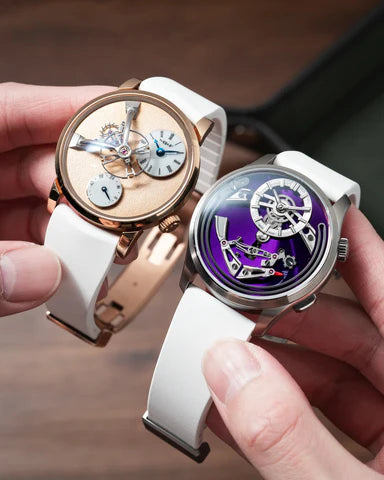

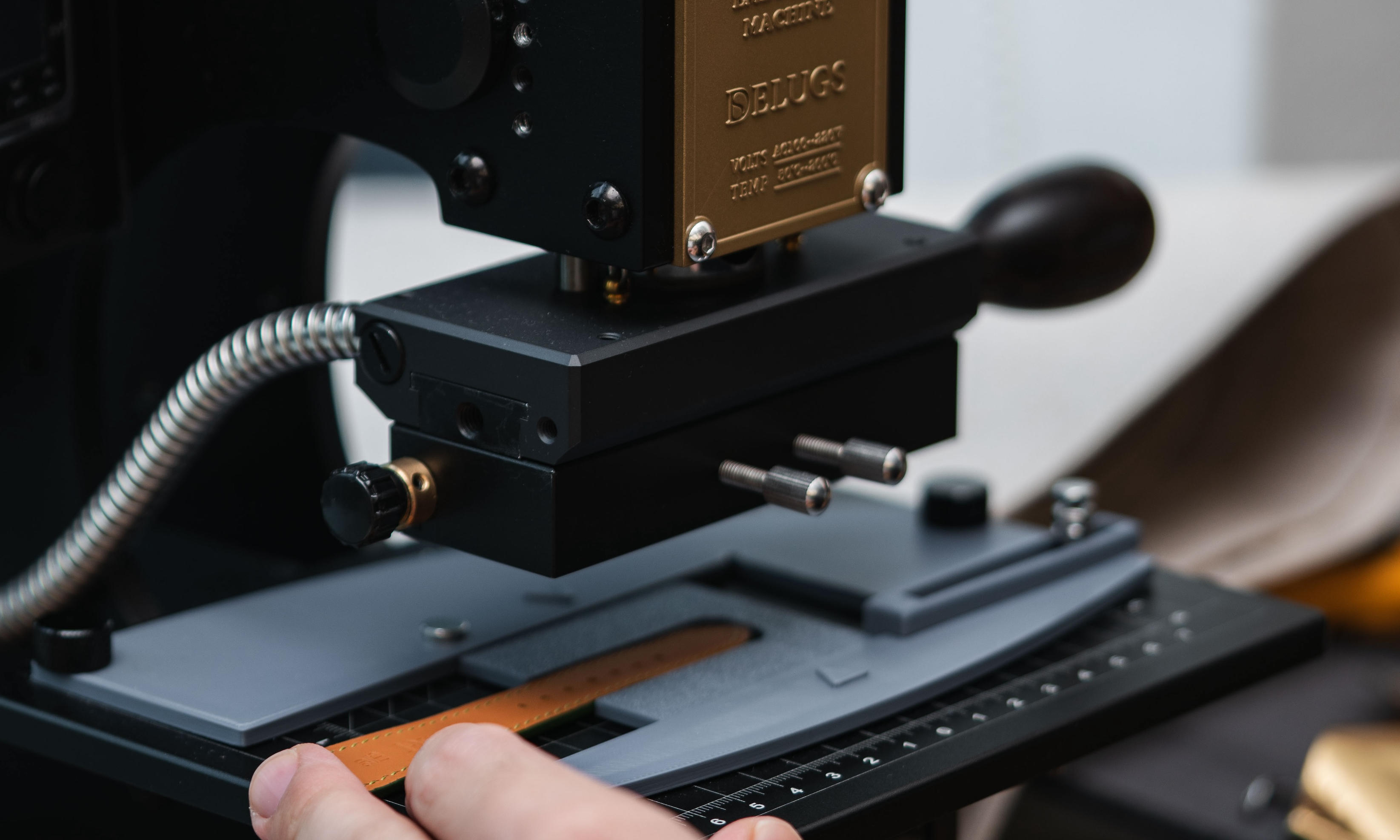


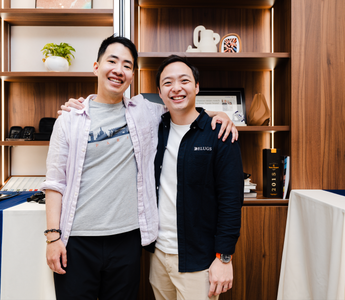
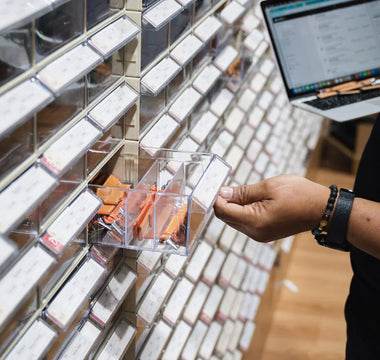
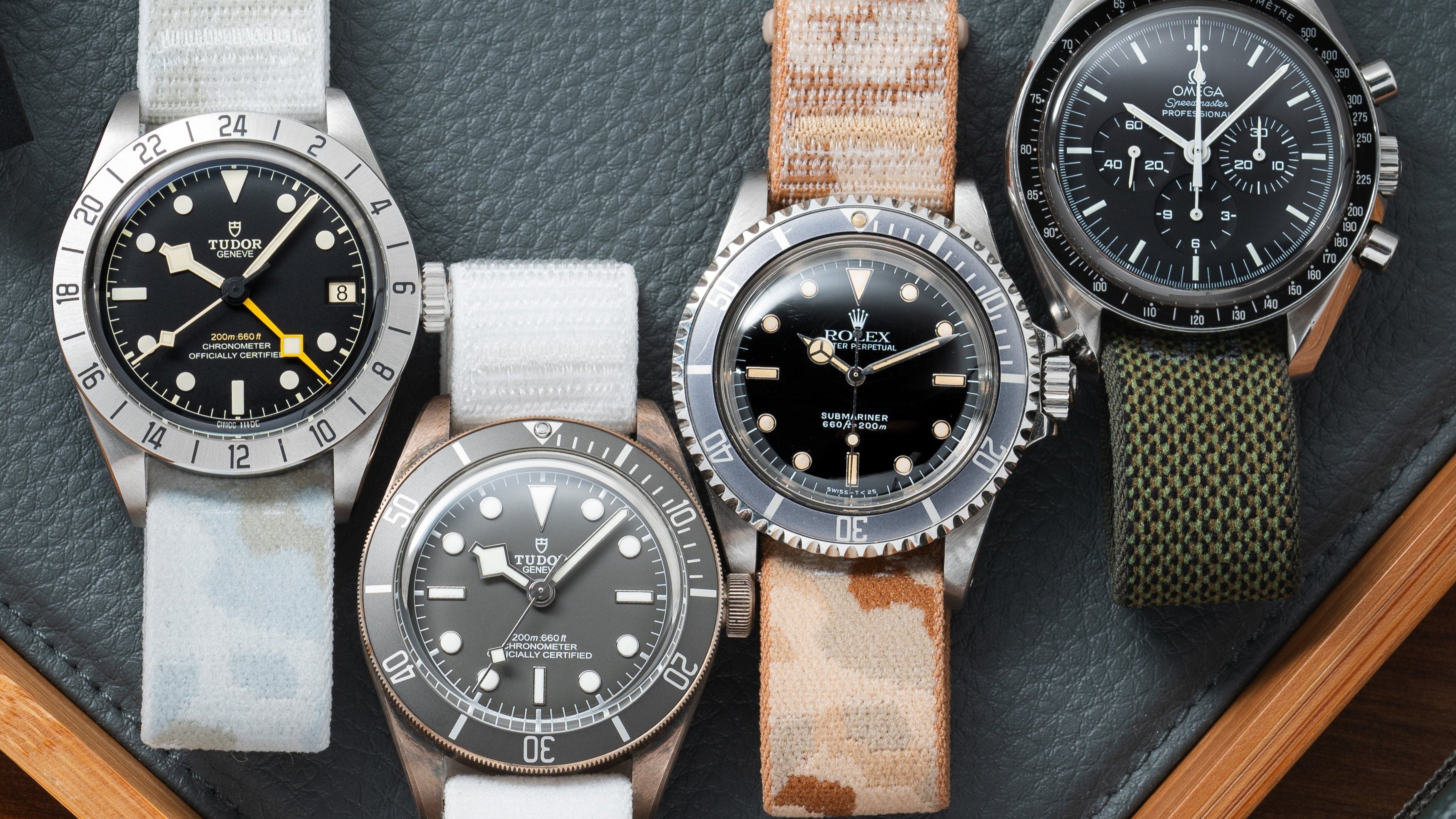
![Anthracite Hook Strap [kollokium x Delugs]](http://delugs.com/cdn/shop/files/20250919-A7405309_298x298_crop_center.jpg?v=1761299094)
![Anthracite Hook Strap [kollokium x Delugs]](http://delugs.com/cdn/shop/files/Kollokium_straps_Anthracite_1_298x298_crop_center.jpg?v=1761299094)
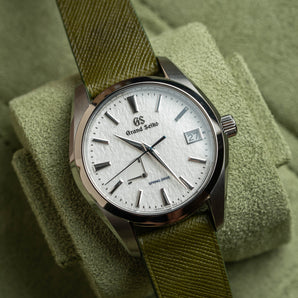
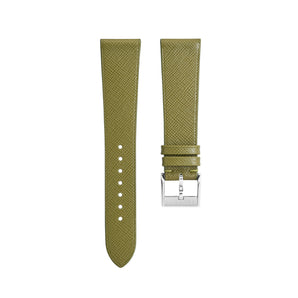

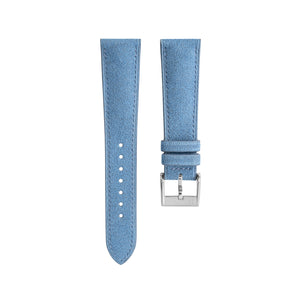
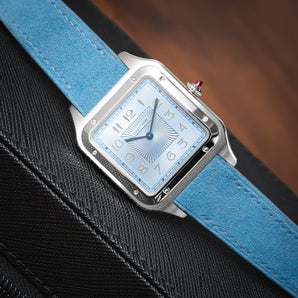
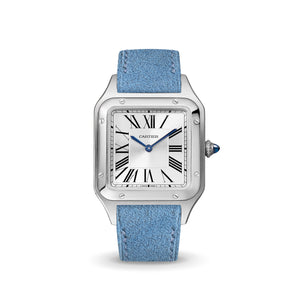
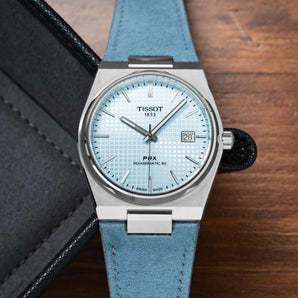
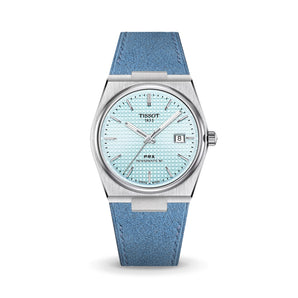

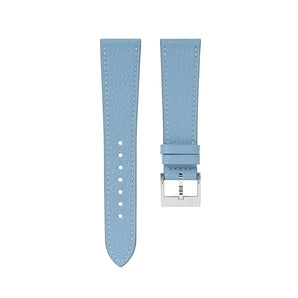
 Buy One, Get One 15% Off
Buy One, Get One 15% Off
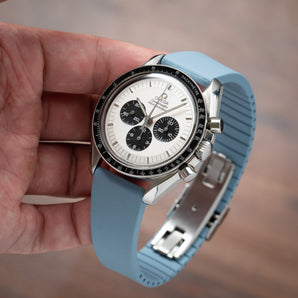


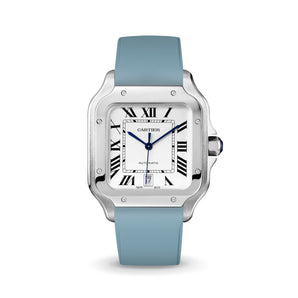
![Baby Blue CTS Rubber Strap for IWC Ingenieur [Prototype]](http://delugs.com/cdn/shop/files/20251001-DSC02482_1_298x298_crop_center.jpg?v=1759730616)
![Baby Blue CTS Rubber Strap for IWC Ingenieur [Prototype]](http://delugs.com/cdn/shop/files/IWC_Ingenieur_Rubber_CTS_Baby_Blue_298x298_crop_center.jpg?v=1759303635)
